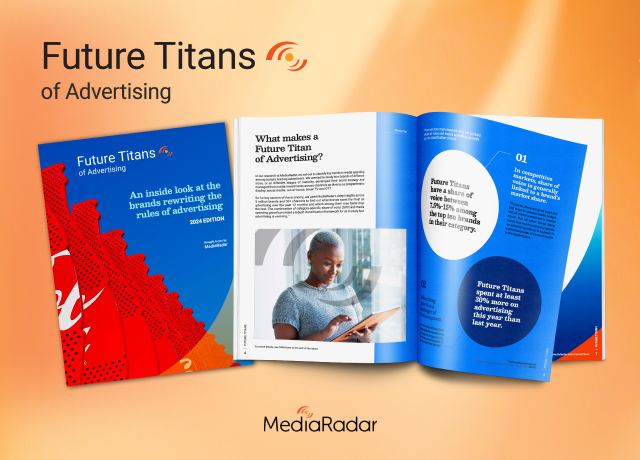As TikTok faces potential restrictions, media companies have an opportunity to win with engaging short-form content, brand safety, and effective consumer engagement strategies.
TikTok has rapidly emerged as an advertising heavyweight, rivaling established giants like Meta, Amazon, and Google. But as the platform faces potential restrictions in the U.S., other media companies have a unique chance to attract brands seeking alternatives for their ad spend.
A recent analysis by MediaRadar reveals some key insights into advertising on TikTok.
- Since January 2023, TikTok has captured nearly 3% of all U.S. media ad revenue, totaling $4.7B
- Dynamic sectors like Media & Entertainment, Retail, and Technology account for over half of ad spend on TikTok
- In Q1 2024, the top 1,000 TikTok advertisers increased spending by 47% year-over-year
As uncertainty looms over TikTok’s future publishers can position themselves to win over migrating ad dollars by:
1. Embracing snackable, short-form video content that appeals to TikTok’s core audience: TikTok’s success is largely attributed to its engaging, easily digestible video content that resonates with younger audiences.
To capture the attention of this demographic, media companies should invest in creating similar short-form video formats tailored to their own platforms. This content should be quick to consume, visually appealing, and designed to encourage repeat engagement.
Consider experimenting with various video lengths, styles, and themes that align with your brand while still capturing the essence of what makes TikTok content so compelling. Incorporate popular trends, challenges, and storytelling techniques that have proven successful on TikTok, but adapt them to fit your unique voice and audience.
2. Emphasizing the advantage of brand safety in their controlled environments: In light of concerns surrounding user-generated content and brand safety on platforms like TikTok, media companies have a unique opportunity to differentiate themselves by offering a more controlled and trustworthy advertising environment.
Highlight your stringent content moderation policies, quality control measures, and the fact that your platform primarily features professionally produced content. This can provide advertisers with peace of mind, knowing that their brand’s reputation won’t be jeopardized by appearing alongside controversial or inappropriate user-generated content.
Also, share your branded content guidelines and showcase successful collaborations with reputable brands to demonstrate your commitment to maintaining a safe and reliable advertising space.
3. Highlighting the link between content and consumer action: TikTok has excelled at driving tangible results for advertisers, thanks to its innovative ad formats and seamless integration of shopping features. To compete effectively, media companies must showcase their own ability to guide consumers from content engagement to create desired actions, such as product purchases or service inquiries.
Share case studies and success stories with prospects that demonstrate how advertising on your platform has directly contributed to measurable increases in sales, conversions, or other key performance indicators.
Emphasize the unique attributes of your audience and how their engagement with your content translates into meaningful actions for advertisers. Also, if you can, consider implementing interactive features, such as shoppable videos or clickable links, that make it easy for users to move from consuming content to taking action. By providing a clear and compelling path to conversion, you can attract advertisers looking to maximize the impact of their ad spend.
By focusing on these three key areas—creating engaging short-form video content, providing a brand-safe environment, and demonstrating a direct connection between content and consumer action—media companies can effectively position themselves as attractive alternatives to TikTok for advertisers seeking to reallocate their budgets in the face of potential restrictions on the platform.



